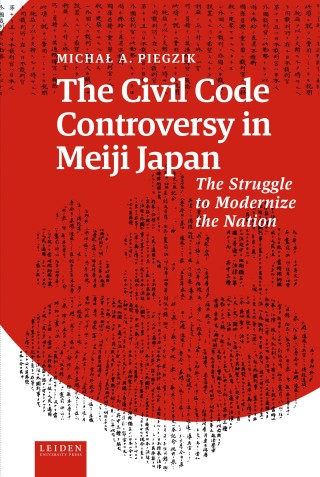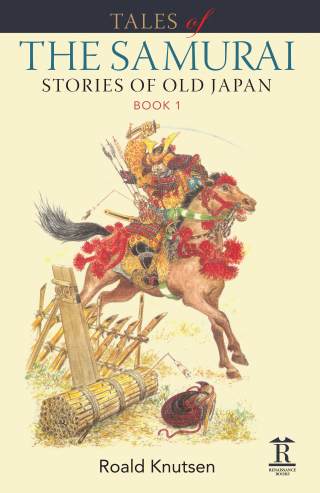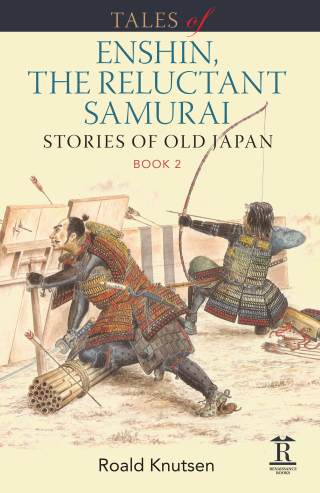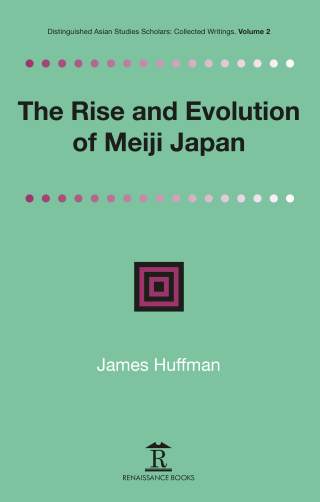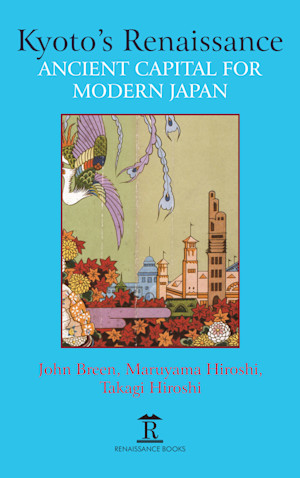
Kyoto’s Renaissance
Ancient Capital for Modern Japan
Draws on archive of material, a first in English to take an in-depth look at Kyoto’s modern transformation – its reinvention after ‘collapse’ (Meiji Restoration) and relocation of the imperial court to Tokyo. Includes: introduction, chapters on notable historical elements that sustain Kyoto as a quintessentially modern ‘ancient capital’ today.
- Title
- Kyoto’s Renaissance
- Subtitle
- Ancient Capital for Modern Japan
- Editors
- John Breen
- Maruyama Hiroshi
- Takagi Hiroshi
- Price
- € 104,00 excl. VAT
- ISBN
- 9781898823926
- Format
- Hardback
- Number of pages
- 238
- Language
- English
- Publication date
- 25 - 06 - 2020
- Dimensions
- 14.6 x 22.2 cm
- Category
- East Asia and North East Asia
- Discipline
- Asian Studies
- Also available as
- eBook PDF - € 103,99
Preface
Introduction: In Search of the Kyoto Modern – John Breen, Maruyama Hiroshi, Takagi Hiroshi
PART 1: Emperor, Rites, and Religion
Chapter 1: The Emperor System and Kyoto: Images of the Ancient Capital (Takagi Hiroshi)
Chapter 2: Performing History: Festivals and Pageants in the Making of Modern Kyoto (John Breen)
Chapter 3: Buddhism and Society in Modern Kyoto (Tanigawa Yutaka)
PART 2: Urban Spaces, Local Communities, and Cityscapes
Chapter 4: The Modern Reorganization of Urban Space and Kyoto’s Historicity (Nakagawa Osamu)
Chapter 5: The Eleventh-Centenary of the Founding of Heian and the Heian Shrine (Kobayashi Takehiro)
Chapter 6: Kyoto Forest Policy: Scenic Beauty and Urban Fringe Forests (Maruyama Hiroshi)
PART 3: Industry, Arts, and Craftsmanship
Chapter 7: The Transformation of Early Meiji Kyoto: Becoming an Industrial City (Takaku Reinosuke)
Chapter 8: Nihonga Painting in Modern Kyoto (Kuniga Yumiko)
Chapter 9: Trends in Modern Ky?-yaki Pottery: On Design in the Meiji Period (Yoshii Takao)
The Contributors
Index
Introduction: In Search of the Kyoto Modern – John Breen, Maruyama Hiroshi, Takagi Hiroshi
PART 1: Emperor, Rites, and Religion
Chapter 1: The Emperor System and Kyoto: Images of the Ancient Capital (Takagi Hiroshi)
Chapter 2: Performing History: Festivals and Pageants in the Making of Modern Kyoto (John Breen)
Chapter 3: Buddhism and Society in Modern Kyoto (Tanigawa Yutaka)
PART 2: Urban Spaces, Local Communities, and Cityscapes
Chapter 4: The Modern Reorganization of Urban Space and Kyoto’s Historicity (Nakagawa Osamu)
Chapter 5: The Eleventh-Centenary of the Founding of Heian and the Heian Shrine (Kobayashi Takehiro)
Chapter 6: Kyoto Forest Policy: Scenic Beauty and Urban Fringe Forests (Maruyama Hiroshi)
PART 3: Industry, Arts, and Craftsmanship
Chapter 7: The Transformation of Early Meiji Kyoto: Becoming an Industrial City (Takaku Reinosuke)
Chapter 8: Nihonga Painting in Modern Kyoto (Kuniga Yumiko)
Chapter 9: Trends in Modern Ky?-yaki Pottery: On Design in the Meiji Period (Yoshii Takao)
The Contributors
Index
Reviews and Features
"Kyoto’s Renaissance is a valuable resource addressing what the authors call the "Meiji-shaped hole" in English-language resources on historical Kyoto. [...] The careful scholarship throughout the collection draws out the ways that Kyoto modernized in the Meiji period by focusing on the conceptual challenges to the city’s identity as well as the pragmatic problems wrought by population decline and industry shifts. [...] This collection of research essays on
Kyoto’s Meiji renaissance [is] a critical resource for future research and teaching on Kyoto and Meiji Japan."
- Jennifer Prough, Valparaiso University, The Journal of Japanese Studies, Volume 48, Number 1, Winter 2022
- Jennifer Prough, Valparaiso University, The Journal of Japanese Studies, Volume 48, Number 1, Winter 2022

